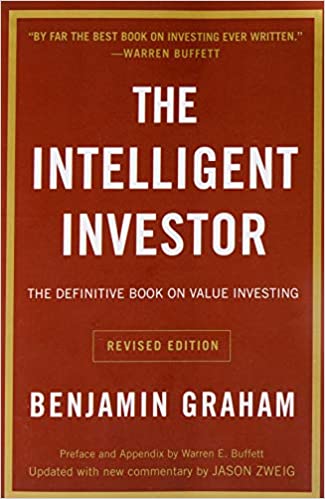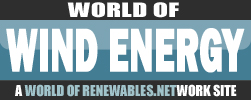About Us The Intelligent Investor
A world of renewables website
Wind power
Wind power is the conversion of wind energy into a useful form of energy, such as using wind turbines to produce electrical power, windmills for mechanical power, windpumps for water pumping or drainage, or sails to propel ships.
Large wind farms consist of hundreds of individual wind turbines which are connected to the electric power transmission network. For new constructions, onshore wind is an inexpensive source of electricity, competitive with or in many places cheaper than fossil fuel plants. Offshore wind is steadier and stronger than on land, and offshore farms have less visual impact, but construction and maintenance costs are considerably higher. Small onshore wind farms can feed some energy into the grid or provide electricity to isolated off-grid locations.
Wind power, as an alternative to fossil fuels, is plentiful, renewable, widely distributed, clean, produces no greenhouse gas emissions during operation and uses little land. The effects on the environment are generally less problematic than those from other power sources. As of 2011, Denmark is generating more than a quarter of its electricity from wind and 83 countries around the world are using wind power to supply the electricity grid. In 2010 wind energy production was over 2.5% of total worldwide electricity usage, and growing rapidly at more than 25% per annum.
Wind power is very consistent from year to year but has significant variation over shorter time scales. As the proportion of windpower in a region increases, a need to upgrade the grid, and a lowered ability to supplant conventional production can occur. Power management techniques such as having excess capacity storage, geographically distributed turbines, dispatchable backing sources, storage such as pumped-storage hydroelectricity, exporting and importing power to neighboring areas or reducing demand when wind production is low, can greatly mitigate these problems. In addition, weather forecasting permits the electricity network to be readied for the predictable variations in production that occur. Wind power can be considered a topic in applied eolics.
Wind farms
A wind farm is a group of wind turbines in the same location used for production of electricity. A large wind farm may consist of several hundred individual wind turbines distributed over an extended area, but the land between the turbines may be used for agricultural or other purposes. A wind farm may also be located offshore.
Almost all large wind turbines have the same design — a horizontal axis wind turbine having an upwind rotor with three blades, attached to a nacelle on top of a tall tubular tower.
In a wind farm, individual turbines are interconnected with a medium voltage (often 34.5 kV), power collection system and communications network. At a substation, this medium-voltage electric current is increased in voltage with a transformer for connection to the high voltage electric power transmission system.
Feeding into grid
Induction generators, often used for wind power, require reactive power for excitation so substations used in wind-power collection systems include substantial capacitor banks for power factor correction. Different types of wind turbine generators behave differently during transmission grid disturbances, so extensive modelling of the dynamic electromechanical characteristics of a new wind farm is required by transmission system operators to ensure predictable stable behaviour during system faults (see: Low voltage ride through). In particular, induction generators cannot support the system voltage during faults, unlike steam or hydro turbine-driven synchronous generators. Doubly fed machines generally have more desirable properties for grid interconnection. Transmission systems operators will supply a wind farm developer with a grid code to specify the requirements for interconnection to the transmission grid. This will include power factor, constancy of frequency and dynamic behavior of the wind farm turbines during a system fault.
Offshore wind power
Offshore wind power refers to the construction of wind farms in large bodies of water to generate electricity. These installations can utilise the more frequent and powerful winds that are available in these locations and have less aesthetic impact on the landscape than land based projects. However, the construction and the maintenance costs are considerably higher.
Siemens and Vestas are the leading turbine suppliers for offshore wind power. DONG Energy, Vattenfall and E.ON are the leading offshore operators. As of October 2010, 3.16 GW of offshore wind power capacity was operational, mainly in Northern Europe. According to BTM Consult, more than 16 GW of additional capacity will be installed before the end of 2014 and the UK and Germany will become the two leading markets. Offshore wind power capacity is expected to reach a total of 75 GW worldwide by 2020, with significant contributions from China and the US.
At the end of 2012, 1,662 turbines at 55 offshore wind farms in European are generating 18 TWh, which can power almost five million households.[36] As of August 2013 the London Array in the United Kingdom is the largest offshore wind farm in the world at 630 MW. This is followed by the Greater Gabbard Wind Farm (504 MW), also in the UK. The Gwynt y Môr wind farm (576 MW) is the largest project currently under construction.
Wind power capacity and production
Europe accounted for 48% of the world total wind power generation capacity in 2009. In 2010, Spain became Europe's leading producer of wind energy, achieving 42,976 GWh. Germany held the top spot in Europe in terms of installed capacity, with a total of 27,215 MW as of 31 December 2010
Europe accounted for 48% of the world total wind power generation capacity in 2009. In 2010, Spain became Europe's leading producer of wind energy, achieving 42,976 GWh. Germany held the top spot in Europe in terms of installed capacity, with a total of 27,215 MW as of 31 December 2010.

worldofwindenergy.com
In our opinion, Intelligent Investor is one of the Best Books on the Stock Exchange. The Intelligent Investor's famous stock market book was written by Benjamin Graham. In addition, he sold over a million copies of the book. The book talks about success on the stock exchange and lays the foundations for valuable investments.
Intelligent Investor is a must-read for beginners. The Smart Investor focuses on instilling long-term investment habits to reduce risk. You should not chase short term profits. In contrast, they should focus on creating wealth. After reading this book, The Intelligent Investor, you will have solid investment advice that has stood the test of time.



